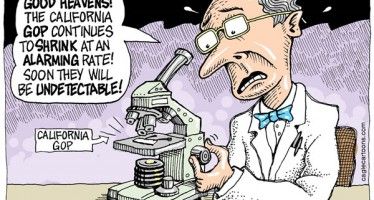Questions Post-Election

 Votes are still being counted in the California election, but the results so far raise some thoughts and questions.
Votes are still being counted in the California election, but the results so far raise some thoughts and questions.
Labor or Business — and the winner is?
Both sides can point to victories — and defeats. Business-supported candidate Catharine Baker, a Republican, surprised labor official Tim Sbranti, a Democrat, in Assembly District 16.
Ben Allen in Senate District 26 was also a big-business win in a Dem vs. Dem race.
Business kept the two-thirds barrier up, which will come into play on many policy discussions over the next two years
Labor scored with Tom Torlakson in the school superintendent race, where he beat reformer Marshall Tuck. Although the race was nonpartisan, both were Democrats.
In the swing vote on the Los Angeles County Board of Supervisors, labor’s candidate Sheila Kuehl prevailed.
Up and down the state it looked like both sides could claim some satisfaction, but business insiders seemed pretty happy with the November results.
Education — reversing party loyalties?
The education issue, if handled correctly, could benefit Republicans by moving Democratic constituencies toward Republicans on education. This is what Neel Kashkari hoped to do by labeling education a civil rights issue.
Look at the recent Field Poll on the Tuck-Torlakson race. According to the poll, Tuck was preferred by double-digit margins among the state’s Latino and African American voters and by 7 percentage points by Asian-Americans.
Opportunity is knocking. Will the Republicans answer?
Tuck-Torlakson — an indication of things to come?
Can two Democrats qualify for a statewide office under the top-two primary? If so, you are likely to see reformers versus the status quo causing tears in the Democrats’ muscle.
Might it happen in the next cycle in races for governor, or lieutenant governor or attorney general?
(By the way, for those keeping score, Kamala Harris got 2,000 more votes in her re-election as attorney general than Gavin Newsom did for lieutenant governor, as of this writing.)
Do we really want that two-thirds supermajority?
Could it be that the governor and some Democrats are grateful they didn’t get the two-thirds standard? Now they can more easily resist the pressure of interest groups by saying, “Why bother? The Republicans won’t let us go there.”
Keeping to the script – over the decades.
Gov. Jerry Brown emphasized fiscal restraint, as he did in his 1978 re-elect. He won by 19.5 percentage points in November back then by supporting Proposition 13 after it passed in that year’s June primary.
This gubernatorial re-election (Act 2), he said no to Proposition 30 tax extensions and said he will control spending. Brown won by 18 percentage points.
How much does it cost to lose an election?
Meg Whitman spent $140 million and lost to Jerry Brown by 13 percentage points. Neel Kashkari spent $7 million (including the primary) and lost by 18 percentage points.
Related Articles
Rand Paul debuts Silicon Valley office
After much talk and anticipation, Rand Paul’s presidential campaign has settled on the office space from where he hopes to
Corrections Realignment Without Vote
Commentary JUNE 7, 2011 By KATY GRIMES State Corrections Secretary Matthew Cate announced at a news conference earlier today that




